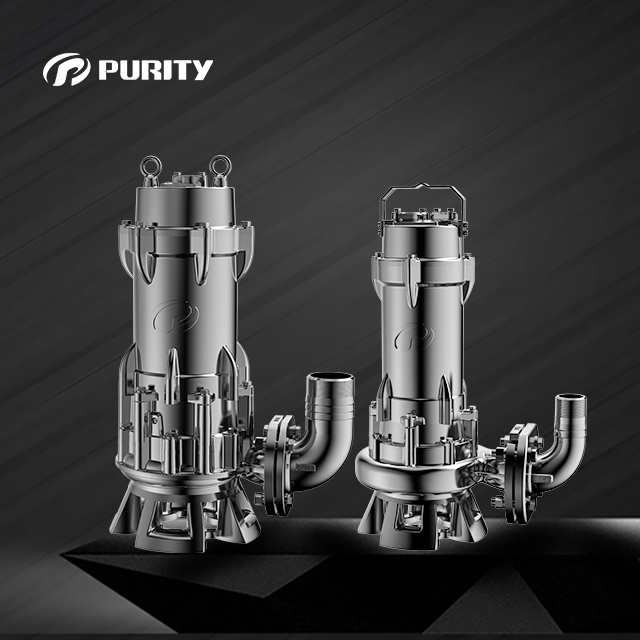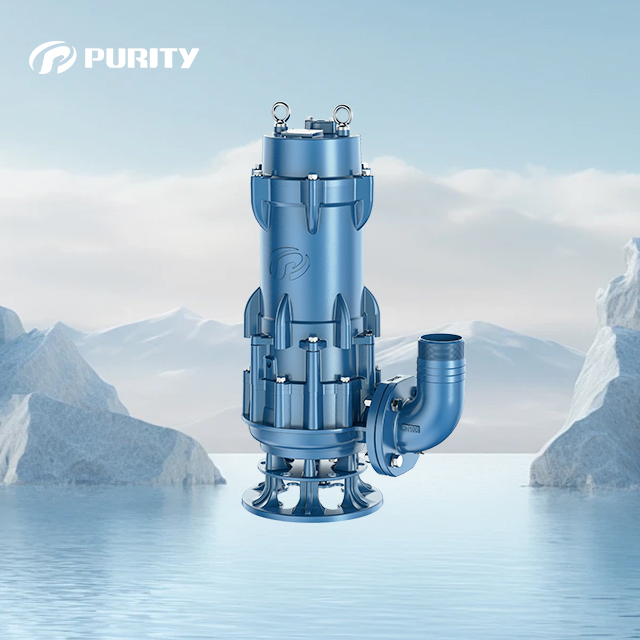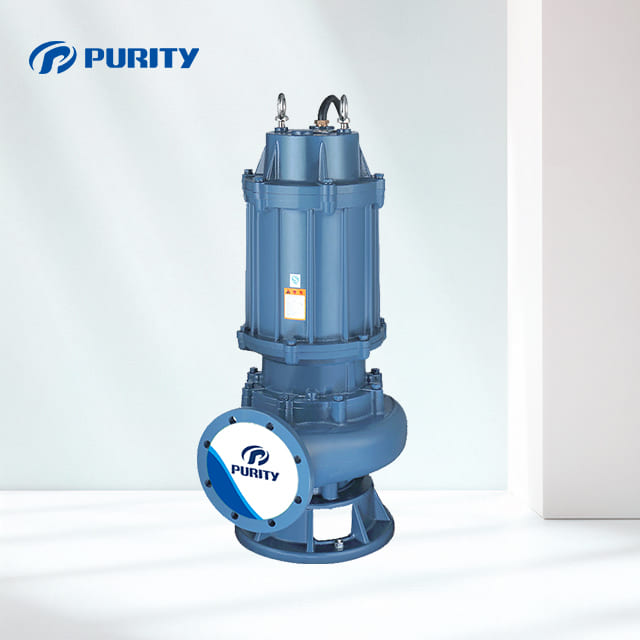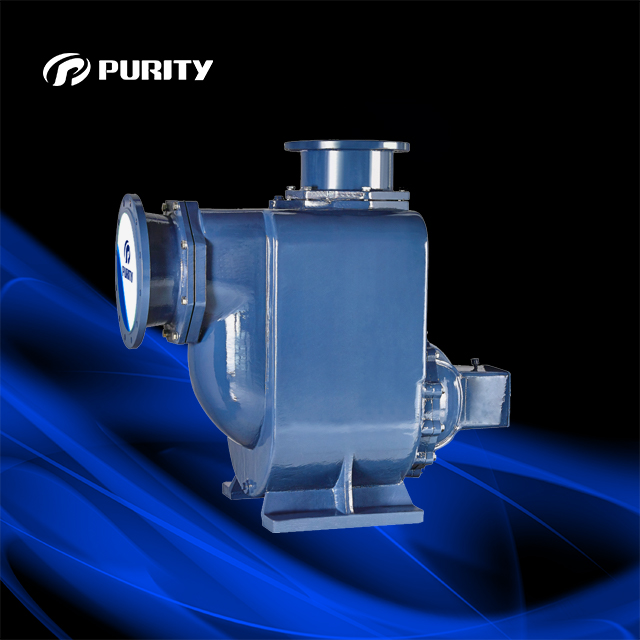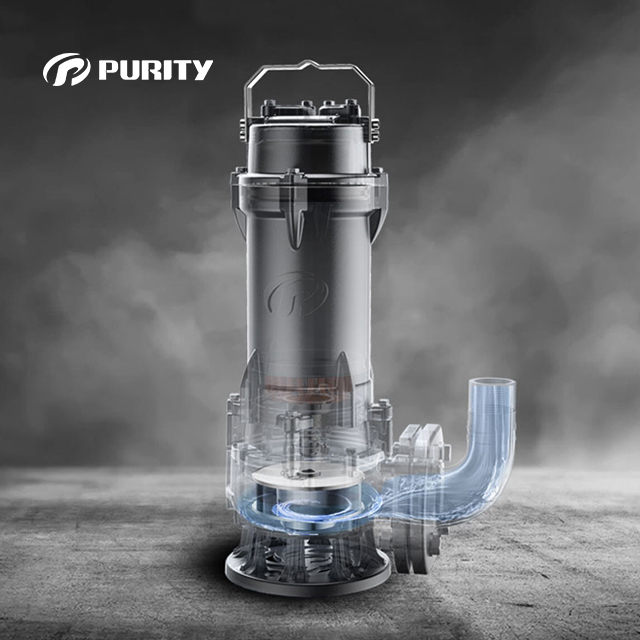Sewage pumps are essential components in modern plumbing systems, responsible for moving solid waste from drainage points to disposal areas, such as septic tanks or public sewer systems. These pumps are designed to operate efficiently under challenging conditions. However, like all mechanical systems, they require regular maintenance to ensure their proper functioning and longevity. Neglecting maintenance can lead to severe issues such as blockages, mechanical failures, and costly repairs. This article explores the warning signs of an impending sewage pump failure and emphasizes the importance of regular maintenance.
Picture|Purity sewage pump WQQG
Warning Signs of Impending Sewage Pump Failure
1. Dirty Water Flowing Through the System
One of the first indicators of a failing sewage pump is the presence of dirty or murky water within the system. The primary function of a sewage pump is to handle waste efficiently and ensure that only treated water exits the system. If dirty water is circulating, it suggests that the pump is not functioning correctly. This issue may stem from a variety of problems, including a clogged pump or malfunctioning filtration system. Professional inspection is recommended to diagnose and address the root cause effectively.
2. Pump Fails to Start or Starts Slowly
A sewage pump that fails to start or struggles to do so is a significant red flag. Several factors could contribute to this problem, including electrical issues, frayed wires, or a blown fuse. In some cases, the pump might have reached the end of its operational life. Attempting to troubleshoot this issue without proper expertise can be dangerous. It is crucial to engage professional services to examine and rectify the problem safely and efficiently.
3. Constant Cycling of the Pump
Sewage pumps are designed to cycle on and off as needed. However, if a pump is constantly cycling, it indicates a malfunction. This abnormal behavior could be due to an improperly adjusted switch, a burnt-out motor, or communication issues within the control system. Continuous cycling can lead to increased wear and tear, ultimately reducing the pump’s lifespan. Professional diagnosis and adjustment are necessary to restore normal operation.
4. Unusual Noises from the Pump
Any strange noises emanating from the sewage pump should be cause for concern. Clanging or banging sounds typically indicate mechanical issues or structural problems. These noises suggest that components within the pump may be loose, damaged, or misaligned. Ignoring these sounds can lead to catastrophic failures and expensive repairs. Immediate inspection by a qualified technician is advised to prevent further damage.
Picture|Purity sewage pump WQ
The Importance of Regular Sewage Pump Maintenance
Regular maintenance is crucial for the efficient and reliable operation of sewage pumps. By keeping the pump in good condition, you can prevent blockages and mechanical failures that may arise from improper items being flushed into the system. Regular cleaning and inspection can identify potential issues before they escalate, saving time and money in the long run.
Specific Steps for Cleaning a Sewage Pump
Cleaning a sewage pump involves several detailed steps. Due to the complexity and potential hazards associated with this task, it is often best left to professionals. However, understanding the process can help in appreciating the importance of regular maintenance:
1. Disconnect Power and Pipes:
- Ensure the pump is unplugged and disconnected from any power sources.
- Carefully detach the pump from its hose or pipe connections to avoid spills and damage.
2. Clean the Pump:
- Open the pump and remove any filter baskets.
- Thoroughly clean the filter baskets and the interior of the pump.
3. Disassemble and Soak Components:
- Disassemble the internal components of the pump.
- Submerge these components in a mild cleaning solution for about an hour.
- Rinse, dry, and reassemble the pump components.
Picture|Purity sewage pump WQ
Professional Maintenance Recommendations
Given the intricacies and risks involved in maintaining a sewage pump, professional intervention is strongly recommended. Professionals have the necessary tools, knowledge, and protective equipment to perform maintenance safely and effectively. It is advisable to schedule maintenance at least once a year, though bi-annual checks can provide added assurance of the pump’s health.
Conclusion
Regular maintenance and timely attention to warning signs are vital for the optimal performance and longevity of sewage pumps.
Post time: May-21-2024

